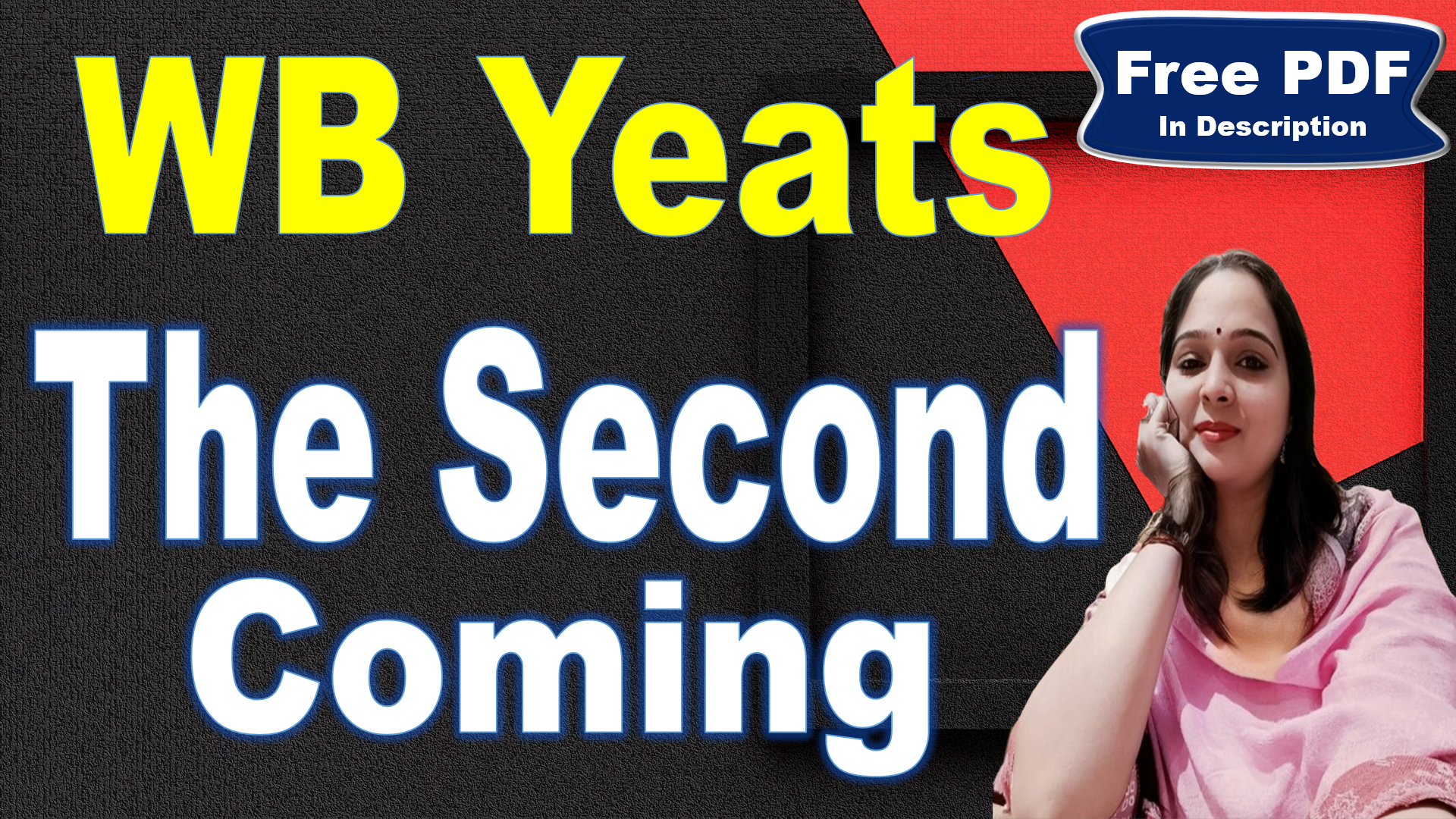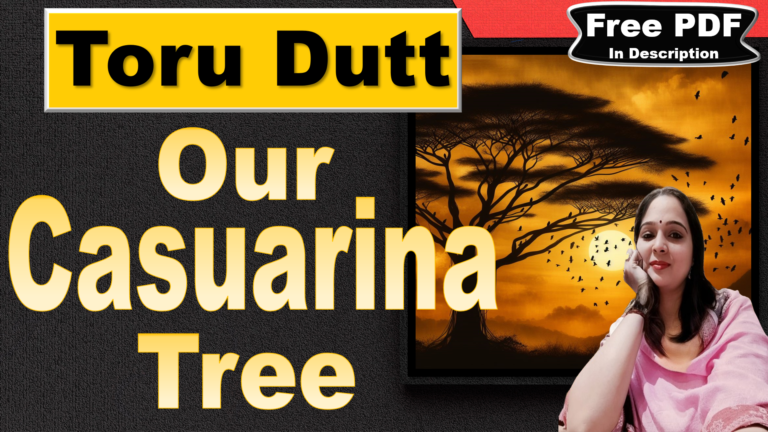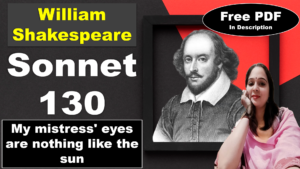The Second Coming Questions Answers
Very Short Answer Questions
What is the central metaphor of the poem?
The widening gyre.
What does the falcon symbolize?
The human spirit losing control.
What breaks down in the opening lines of the poem?
The connection between the falcon and the falconer.
What does “Things fall apart; the centre cannot hold” signify?
Societal collapse and disorder.
What is loosed upon the world according to the poem?
Mere anarchy and the blood-dimmed tide.
What drowns the ceremony of innocence?
Anarchy and violence.
How are the best and the worst described in the poem?
The best lack conviction, while the worst are full of passionate intensity.
What does the speaker anticipate is at hand?
A revelation and the Second Coming.
What image troubles the speaker’s sight from Spiritus Mundi?
A shape with a lion body and a human head.
What is the gaze of the rough beast described as?
Blank and pitiless as the sun.
Where is the rough beast moving?
Towards Bethlehem.
What period of time is referred to by “twenty centuries of stony sleep”?
The two thousand years since the birth of Christ.
What literary device is used in “the blood-dimmed tide is loosed”?
Metaphor.
What historical context influenced Yeats in writing the poem?
The aftermath of World War I.
What does the rough beast symbolize?
The emergence of a new, ominous era.
What tone dominates the poem?
Ominous and foreboding.
What form of imagery is prevalent in the poem?
Dark and apocalyptic imagery.
What is the poem’s rhyme scheme?
Irregular and varied.
What does the phrase “Spiritus Mundi” refer to?
The world spirit or collective unconscious.
Quotes suggesting resistance to change?
“The center cannot hold.”
Short Answer Questions
What is the significance of the falcon and falconer imagery in the poem?
The falcon and falconer imagery symbolizes the loss of control and the breakdown of communication between guiding principles and the world. As the falcon flies in widening circles and loses contact with the falconer, it represents the chaos and fragmentation of society, indicating that traditional structures and authorities are no longer effective.
How does Yeats use the concept of a “gyre” in the poem?
Yeats uses the concept of a “gyre,” or a spiral, to depict the cyclical nature of history and the expansion of chaos. The widening gyre suggests a world spinning out of control, moving further away from the center, which symbolizes order and stability. This reflects Yeats’s belief in historical cycles and the inevitability of societal collapse and rebirth.
What does the phrase “Things fall apart; the centre cannot hold” imply about the state of the world?
This phrase implies that the foundational structures and principles that hold society together are disintegrating. The center, representing stability and order, can no longer maintain coherence, leading to a breakdown of social and moral order. It suggests a world in chaos, where established norms and values are collapsing.
Explain the significance of the “blood-dimmed tide” and the “ceremony of innocence is drowned” in the poem.
The “blood-dimmed tide” signifies widespread violence and bloodshed, creating a sense of pervasive destruction. The drowning of the “ceremony of innocence” indicates the loss of purity, morality, and civilized behavior. Together, these images highlight the chaotic and violent state of the world, where innocence and order are overwhelmed by anarchy and brutality.
How does Yeats contrast “the best” and “the worst” in the poem?
Yeats contrasts “the best” and “the worst” by describing the best as lacking conviction and the worst as being full of passionate intensity. This contrast underscores a moral imbalance where those who are wise or morally good are uncertain and inactive, while those who are wicked or fanatical are fervent and forceful. It highlights the dangers of moral apathy and the rise of dangerous ideologies.
What is the significance of the “Second Coming” in the context of the poem?
The “Second Coming” in the poem refers to a significant and transformative event, drawing on Christian eschatology where it signifies the return of Christ and the end of the world as we know it. However, Yeats uses it to suggest the emergence of a new and ominous force, not as a moment of redemption, but as the birth of something monstrous and terrifying. It represents the upheaval and potential for a new, darker era.
What role does “Spiritus Mundi” play in the poem?
“Spiritus Mundi,” meaning the world spirit or collective soul, represents the source of universal symbols and archetypes. In the poem, it serves as the origin of the troubling vision that the speaker experiences. It suggests that the imagery of the rough beast emerging from the desert is drawn from a shared, collective unconscious, giving the vision a sense of universal significance and inevitability.
Describe the imagery used to depict the “rough beast” in the poem.
The rough beast is depicted with a lion’s body and a man’s head, conveying a sense of power and intelligence combined with brutality. Its gaze is described as “blank and pitiless as the sun,” suggesting a merciless and indifferent nature. The beast moves its slow thighs, creating a sense of ominous inevitability, while indignant desert birds reel around it, enhancing the sense of dread and foreboding.
What does the phrase “twenty centuries of stony sleep” refer to, and what is its significance?
The phrase “twenty centuries of stony sleep” refers to the two thousand years since the birth of Christ, a period marked by relative stability and order. Its significance lies in the contrast between this long period of dormancy and the nightmare that is now being awakened by the birth of the rough beast. It suggests that the world is on the brink of a dramatic and unsettling transformation.
How does Yeats use the allusion to Bethlehem in the final lines of the poem?
The allusion to Bethlehem in the final lines of the poem, the birthplace of Christ, creates a stark contrast between the hopeful promise of the original nativity and the ominous birth of the rough beast. This juxtaposition emphasizes the idea that the new era being born is not one of redemption but one of dread and foreboding. It underscores the theme of a cyclical historical process where periods of stability and order are followed by chaos and destruction.










